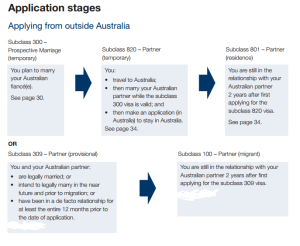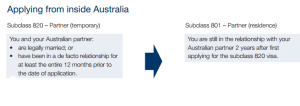Making the transition to permanent residency once you are in Australia is an important step that entitles you to a number of benefits and cements your place in Australian society with almost all of the rights of an Australian Citizen. You gain entitlements to medicare, social security benefits, the right to sponsor others to come to Australia and free education for your children. You can become a full citizen after 4 years of living lawfully in Australia and 1 year of being a permanent resident. It also gives you the right to stay in Australia for 5 years after which you apply for a resident return visa which is a relatively simple matter. You also gain the benefit of being able to live in Australian independently from the requirements of a temporary visa such as employer sponsorship the requirement to study or having to consistently renew your temporary visa.
One of the most common paths to permanent residency in Australia is achieved when people are currently working on a 457 visa in Australia and then apply for a Employer Nominated Subclass 186 Visa. One of the main reasons for this is that by working on a 457 visa for more than 2 years is accepted by the government as having proved the value of your skills in the Australian labor market. There are basically two ways to achieve permanent residency through the Subclass 186 Visa if you already have a 457 visa. The first is called the ‘Temporary Residence Transition Scheme’, the second is called the ‘Direct Entry’ Scheme.
Temporary Residence Transition
If you have been working in Australia under a 457 visa for 2 years with the same employer in the same nominated occupation, you are most likely eligible to apply for the Subclass 186 Temporary Residence Transition Scheme. You will need your current employer to nominate you for a permanent position.
Direct Entry
The direct entry scheme is for people that have not been working for 2 years or more. It requires you to obtain a skills assessment for the nominated occupation that you are applying under and to be able to demonstrate that you have more than 3 years work experience in the relevant field. The direct entry stream also requires a nomination from an employer for a valid position.
Together, the direct entry and temporary residence transition scheme are the two most common ways of transitioning to permanent residency in the Australian migration program. If you would like to discuss your options in relation to migration further, or your require assistance in the preparation of your visa application we would welcome your inquiry.











































